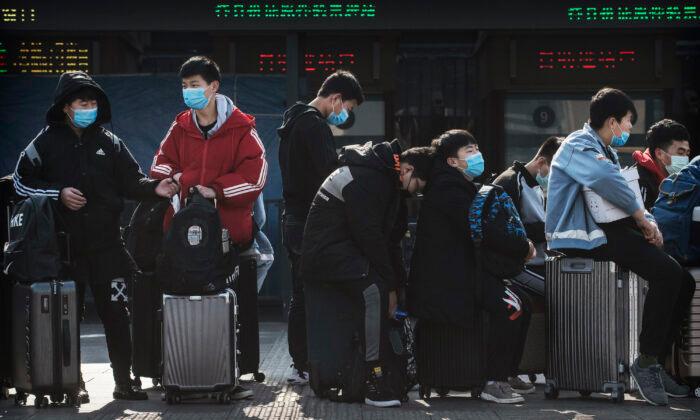Said investigation and its results have not been previously disclosed to the international community.
Collecting Samples
China’s National Health Commission issued a notice on Feb. 25, 2020, to the health commissions of all Chinese provinces, regions, and municipalities, as well as the Xinjiang Production and Construction Corps, a CCP-run paramilitary organization with jurisdiction over some cities and land in far-western Xinjiang.The notice called for cooperation in virus tracing by testing wild animals, the humans who came into contact with them, and the animals’ environment or habitat.
The sampling of close human contacts included throat swabs and blood samples, and those of animals included throat and anal swabs, the notice stated.

Blood samples were to be sent to local Chinese centers for disease control and prevention (CDC) for safekeeping until they could be tested for COVID-19 antibodies. Other samples were to be tested using COVID-19 nucleic acid testing by local laboratories, and the results would be sent to local police bureaus.
The notice was labeled “not to be disclosed.”
In another document, dated Feb. 26, 2020, the Hebei Province Health Commission forwarded the notice from the National Health Commission to the health departments of all cities within its jurisdiction, as well as the Hebei CDC, and gave instructions on how to execute the national authority’s directive.
The Hebei Health Commission put local health departments and police bureaus in charge of collecting the samples from human contacts. Sample collection and testing of wild animals and their environment were delegated to local forestry and agriculture departments.

A third document shows that Shijiazhuang, the capital of Hebei Province, forwarded the instructions to the city’s county health departments as well as the city’s CDC on Feb. 29, 2020, telling them to execute the provincial directive.

China’s National Health Commission didn’t respond to a request for comment by press time.
In the internal investigative report dated Jan. 22, 2020, the National Institute for Viral Disease Control and Prevention at China’s CDC reported that 33 of the 585 samples taken from items and floor surfaces in the seafood market tested positive for the CCP virus.
The report stated that 31 of the 33 samples that tested positive were from the western section of the market, which was found to have wild animal trading.
A total of 139 samples were taken from bamboo rats, porcupines, turkeys, rabbits, and other animals at the breeding farms, as well as the farm environment, which all tested negative through nucleic acid testing, according to the report.
Lack of Transparency From CCP
Though most experts say the virus is likely to have originated in animals, it’s still unclear how and when exactly the virus jumped to humans.Since the start of the COVID-19 pandemic in late 2019, China has been withholding information on the virus from the international scientific community.
China has also pushed conspiracy theories about the origin of the virus, alleging that it came from outside of China.
In January 2021, the Chinese regime finally agreed to allow a team of experts from the World Health Organization (WHO) into the country to investigate the virus origins.
The team of experts arrived in Wuhan on Jan. 14, more than a year after the initial outbreak in the city.
Grigsby pointed out that it had been eight months since WHO member states adopted Resolution WHA73.1, which called for continued investigations into “the zoonotic source of the virus and the route of introduction to the human population.” The resolution also stated that it was crucial that Chinese authorities give the team of WHO experts access to all analysis of animal, human, and environment samples taken in Wuhan as well as “caregivers, former patients, and lab workers for interviews.”
Asked about the internal documents about China’s investigation, the WHO said in an email: “We will provide more info on the work of the team once we have it.”




